The gun-maker Robert Adams, born in 1809, is largely forgotten by sportsmen today but the gun making time-line featuring Adams as a proprietor, manager, or partner in a London gun-making firm stretched from when Robert Adams worked for George & John Deane, in King William Street, through the 1847 partnership of Deane, Adams & Deane, then his own enterprise, named The London Armoury Co, from 1856-’58 and, finally, on his own account in 1859 at 76 King William Street, Henry Street and Pall Mall, where he is recorded beyond 1866.
Nigel Brown suggests business lasted until 1870, when Adams would have been fifty-nine, but the name Adams continues to feature in various companies, like Adams & Co. and the Adams Patent Small Arms Co. Ltd, until 1892. The historical recored is far from flawless but Adams is certainly better known for his pistols than his sporting guns.
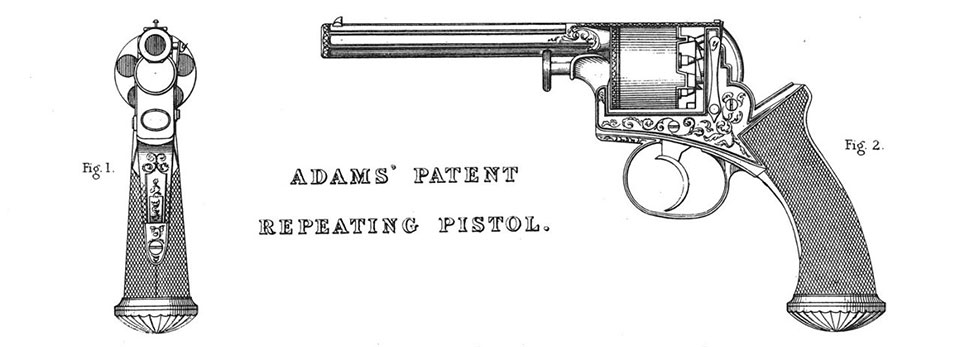
Robert Adams was, by 1860, a well-established face in the London gun trade and was especially well known for his revolvers. In 1851, Adams had exhibited his new patent for a double action revolver, which was then adopted by the East India Company for cavalry deployment. A later iteration of the concept, embodied in the Beaumont-Adams revolver of 1855 was far better and successful. The 1857 Indian Mutiny proved the rapid-firing, large-calibre Adams revolver better than its rivals, like Colt, in a multi-assailant, close quarters fight and thereafter it was adopted by the British Army.
From his shop at 76 King William Street, Adams turned his attention to the sporting gun and patented an improvement on the Lefaucheaux breech-loader, which had been a co-exhibit in 1851, alongside the Adams revolver at the Great Exhibition. By 1860, breech-loaders had been available to the British shooting public for nine years and had undergone several improvements to create a stronger and more user-friendly operating system.

Among the improvements to the original Lefaucheaux breech-loader, we can count the Joseph Lang forward-facing under-lever, the 1858 Westley Richards top-bolted ‘doll’s head’ with top-lever, and the Henry Jones ‘screw-grip’ and lever-over-guard’ of 1859.
The year 1859 was notable as the year The Field held a Trial of Breech-loaders vs Muzzle-loaders and all the breech-loaders there were of the forward facing under-lever type, according to J.H. Walsh, the Editor. However, forward-facing levers would rapidly lose ground to other, now more familiar operating mechanisms.
It is worth noting that the Jones screw-grip was massively successful and used by just about every maker in the country, remaining a common sight throughout the century. The Westley Richards arrangement is still used, with some modifications and the addition of a Purdey bolt in the guns they build today. The Adams patent is not.
The Robert Adams gun we are to examine here enjoyed no long-lasting success but it was quite successful for a limited time in the early 1860s. The gun is elegant, lively in the hands and beautifully built. The lever and operating button are real achievements of filing and finishing, still operating perfectly and feeling pleasing to use.
The lever runs over the guard and resembles a Daw lever superficially but at its extremity there is a bulbous section with a button. Pressing the button releases the lever from its spring-loaded retaining catch and allows it to drop forward on its hinge.

The other end of the lever projects through the bar of the action and forms a split hook. When engaged, this hook draws down on an inverted T-shaped rear lump with half-circle top-sides. The concave half-circle surfaces of the hook, draw the barrels tight onto the bar flats, thereby locking the gun securely closed. There is no spring operation involved, the action is inert and the movements must all be completed mechanically. The lever is retained in position by a catch that clicks into place in a slot in the guard.
When introduced, the Adams gun was, of course, a pin-fire. However, Daw introduced the centre-fire a year later and this quickly gained favour. Because many sportsmen had spent good money on pin-fire breech-loaders within the last ten years, or less, it must have been irritating to be told your expensive gun was already obsolete.
Many sportsmen decided to convert their pin-fire guns to centre-fire rather than buy a new one. This is what happened to the Adams gun here. It is a 16-bore with 30” fine Damascus barrels and a 14 1/2” straight hand stock, with full steel butt-plate. Engraving of large scrolls covers the locks (which are bar-locks converted to rebounding), the slim fences and the short top-strap. Underneath, it extends to the visible bottom section of bar, the trigger guard and the operating lever.
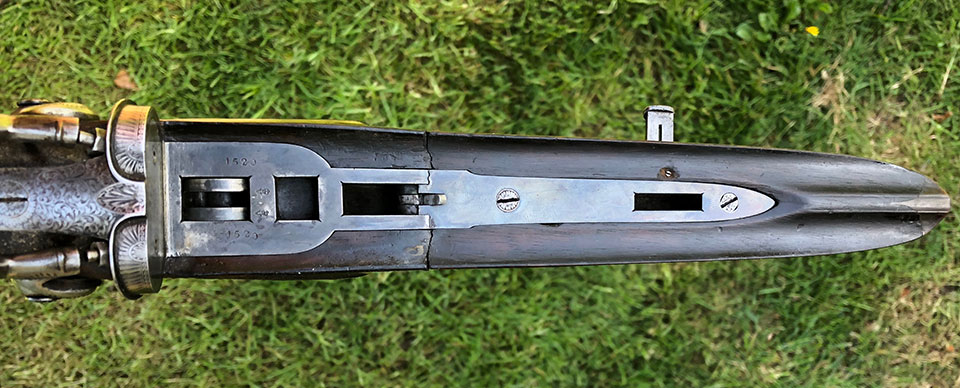
The barrels can be removed by sliding out the wedge in the forend but the forend is permanently attached, the wood flowing from the forend, covering the bar and action and into the hand, with just one, nice, tight, joining line at the knuckle.
Barrels and bar flats carry the serial number 1520 and London proof marks, barrel maker’s initials are stamped ‘JA’. It may be a co-incidence that Robert Adams' brother was called John (J.A). The narrow, concave rib carries the legend ‘Robert Adams, Maker to the Royal Family, No. 76 King William Street, London’. The browning is faded but pleasingly ancient and shows-off the fine figure of the Damascus.
The barrels are original and careful examination reveals the inserts that fill the old pin-fire holes. The replacement hammers are relatively simple in shape and quite plain but carry a little scroll engraving.
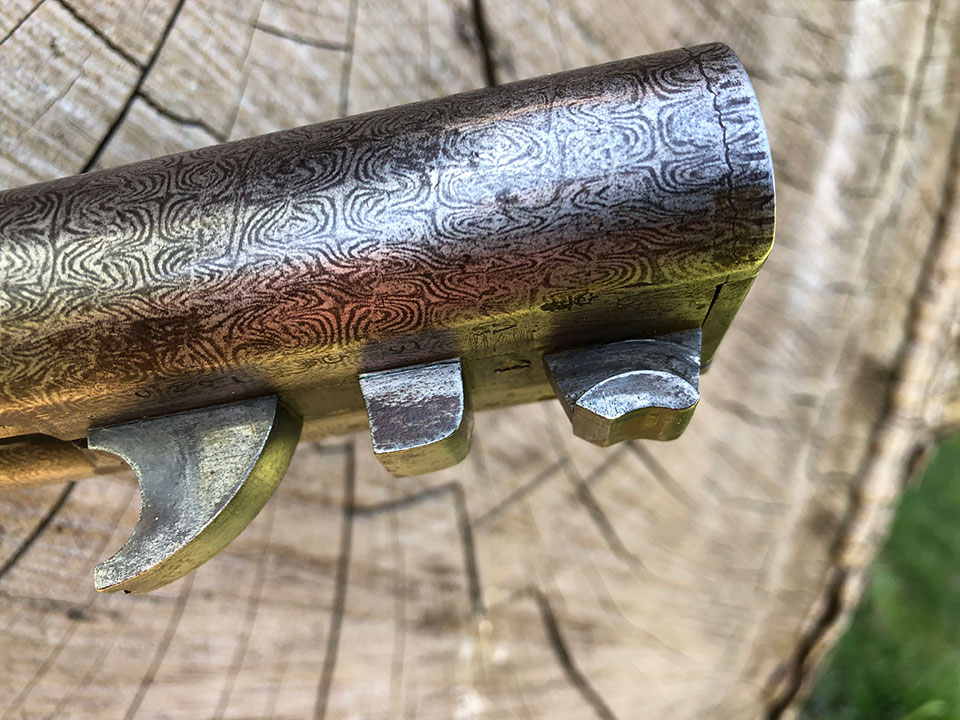
The Adams patent of 1860 is listed as an ‘Inert Under-lever Hook Bite’ and given Patent No. 285. However, this gun has engraved on the lever; ‘ Patent No.161’, for which I can find no entry, so assume it is a reference to the 161st gun made to this patent. Adams clearly made for, or sold his action to, other gunmakers - Crudgington & Baker illustrate one by Burtinshaw of Leeds, still in pin-fire form.
The gun has a pleasing aspect and feels lively but the nature of the grip and the small holding hook in the guard that retains the lever in closed position is fiddly in the field, compared to the rugged strength and single movement of the Jones patent, which proved so much longer-lived.
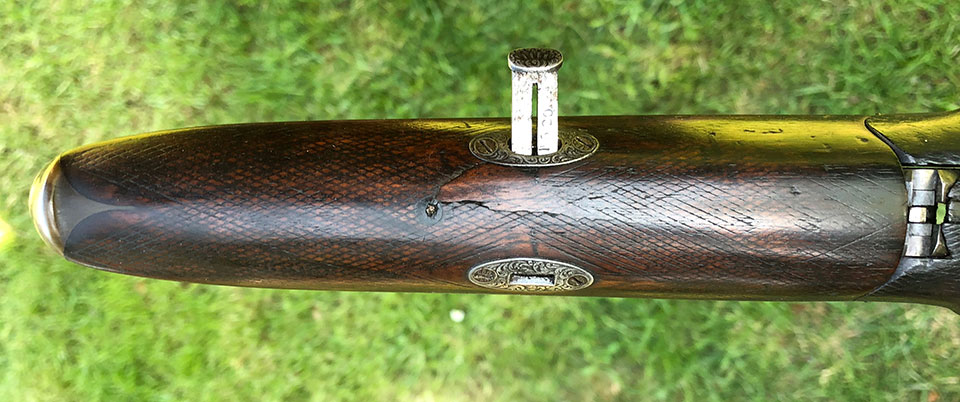
I have yet to shoot the Adams 16-bore. Barrels are black-powder proof, of course, and pitted, with a minimum wall thickness reading of 17 thou’. It would probably handle a mild nitro load - these guns, in my experience, are a lot stronger than one might think, but I feel the old thing has done its work and deserves a genteel retirement on the wall of my gun room. If it were still in its original pin-fire form, it would not require a licence and I could hang it in the study but such are our laws that it needs to be secured as a modern firearm.
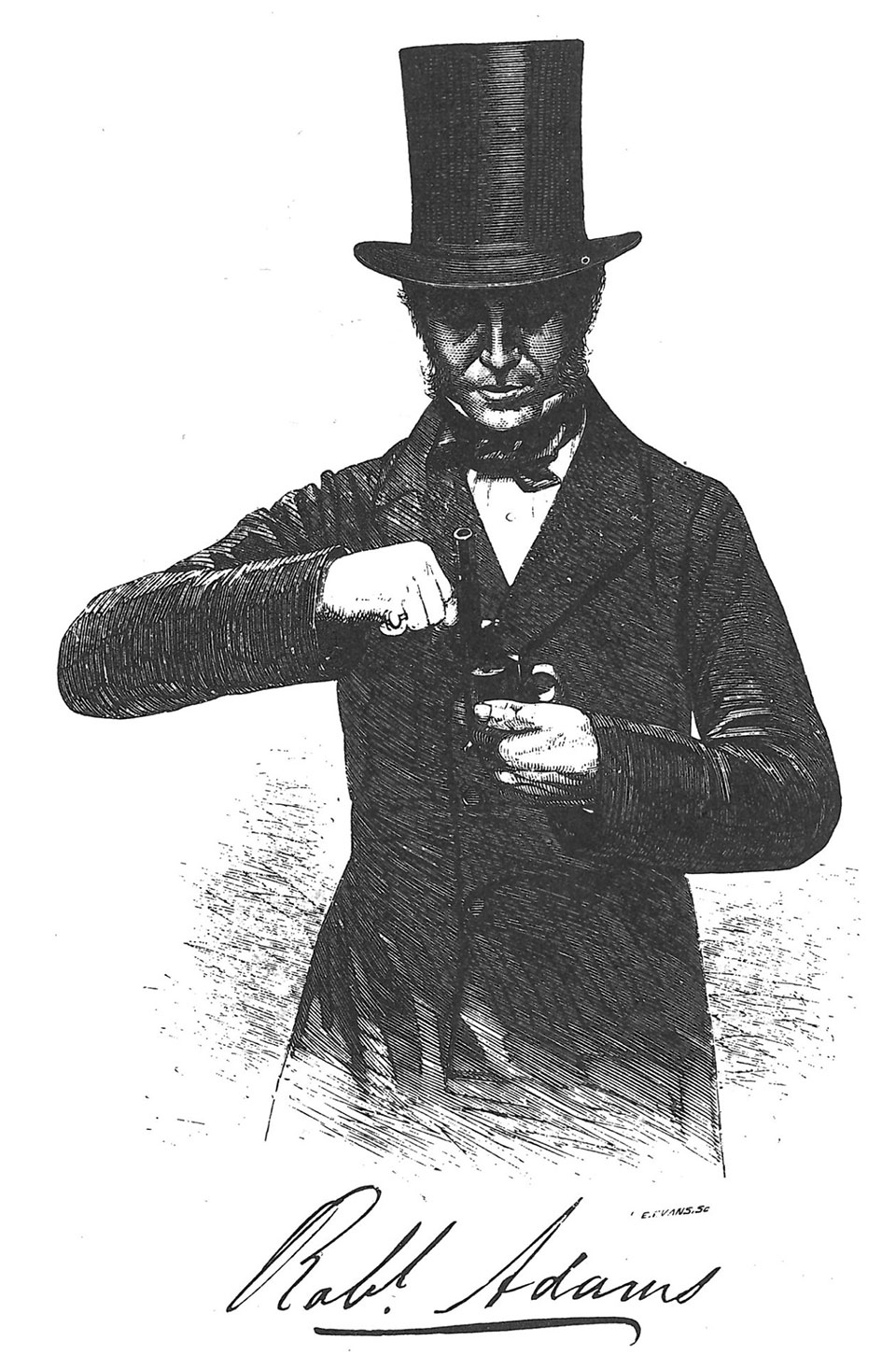
Thanks to Mark Crudgington for helping clarify some of the dates that Robert Adams was in business.
Published by Vintage Guns Ltd on




